The California Building Industry Association has released our 2024 Housing Killers and Creators, a list of bills moving through the California legislative process that, if approved, would impact California’s housing policy crisis.
Bills on the Housing Killers list would make the housing policy crisis worse by increasing cost, time, and hurdles to build homes in the state.
Bills on the Housing Creators list reduce barriers to home construction or help address the need for more houses in California.
The purpose of CBIA’s Housing Killers and Housing Creators list is to highlight legislative efforts related to California’s housing policy crisis that should be dropped, improved, or championed.

Adds residential housing to the state’s Anti-Trust Law, Unfair Business Practices law, and Unfair Competition Law. It would expand the scope of residential housing regulations in the state and create more barriers to investments in home construction, ultimately impacting housing affordability for residents. Additionally, the bill may also limit competition during California’s ongoing housing crisis, further reducing choices for consumers.
Requires contractors and subcontractors contracting with a state agency to certify that the wood used in their projects is not sourced from certain regions. It is in direct opposition to the rigorous sustainable practices and certification standards that North America currently upholds. Developing a redundant program will disrupt lumber supply to California during an existing housing shortage increasing the cost of housing and waste the state’s already limited resources.
Creates a sweeping and complex new regulatory program at the Department of Toxic Substances Control to regulate all commercial and consumer products that may contain perfluoroalkyl and polyfluoroalkyl substances. This incredibly far-reaching bill could potentially outlaw essential building products such as heat pumps and electrical wiring that have been mandated by the state of California to help achieve climate and energy objectives and are crucial in creating safe, affordable, and sustainable low-carbon homes. This measure could have a significant impact on California’s green housing market and the ability to meet important environmental goals.

Places a school bond on the November 2024 statewide ballot which will allow for the construction and modernization of safe schools and the construction of more housing. Without this bond, California home builders cannot build homes that are attainable for middle class families. AB 247 is crucial for ensuring that our school facilities keep up with the changing needs of our students and teachers. It will secure funding to construct new schools, modernize older school buildings, improve technology, and upgrade security. New and updated school facilities, which are significantly more energy efficient, are needed to help California achieve its climate goals.
Adds stability to California’s home and commercial insurance marketplace by authorizing the California FAIR Plan Association to request the California Infrastructure and Economic Development Bank to issue bonds and would authorize the bank to issue those bonds. The current insurance crisis is impacting many Californians, including those who live in single family homes and condominiums. Serving as a safety net for consumers when they need it most, this bill aims to strengthen the FAIR Plan’s financial stability in the event of major catastrophes, allowing it to serve as a reliable insurance option until the market stabilizes. This will better protect homeowners and buyers who are unable to secure coverage in the traditional insurance market.
- Will the bill constrain or increase housing production and supply?
- Will it increase or decrease the cost to build houses?
- Will it make housing even more expensive or less expensive for Californians?
- Will it make any of the processes associated with homebuilding such as the entitlement, approval, or permitting processes more complicated, difficult, and lengthy or less complicated, difficult, or lengthy?
- Does it discourage or encourage homeownership?
- Does it increase or decrease regulatory barriers?
- Will it encourage or discourage unnecessary lawsuits aimed at new home construction?
- Does the bill balance the housing crisis unfairly on the backs of a few versus a more egalitarian distribution or equally serve all Californians buying their first home?
California’s LAO reports that to avoid extreme cost increases, the state should have been building as many as 110,000 units a year, from 1980 to 2010. In reality, home production has averaged less than 80,000 new homes annually over the last 10 years.
Homeownership is not only a key factor in stabilizing communities, providing access to education, and employment opportunities, but it also plays a crucial role in improving physical and mental health. Affordable housing has been shown to reduce stress, exposure to toxins, and the spread of infectious diseases.
In addition, owning a home is a significant way for Americans to build wealth and create a lasting legacy for future generations. However, homeownership rates in California are currently at their lowest since the 1940s, exacerbating existing inequities in homeownership.
To address these challenges, it is essential to increase housing production of all types to promote equity in homeownership, support the well-being of Californians, and stimulate the state’s economic recovery.
The home building industry in California is actively seeking ways to increase housing supply by developing new projects in high-demand areas. By collaborating with local governments and community stakeholders, the industry aims to create diverse housing options that cater to the needs of all income levels to provide Housing for All.

#HOUSINGFORALL Based on feedback from our builders around the state, in January 2020 we compiled a series of legislative proposals aimed at relieving the state’s ever-growing housing policy crisis. Read more here.
